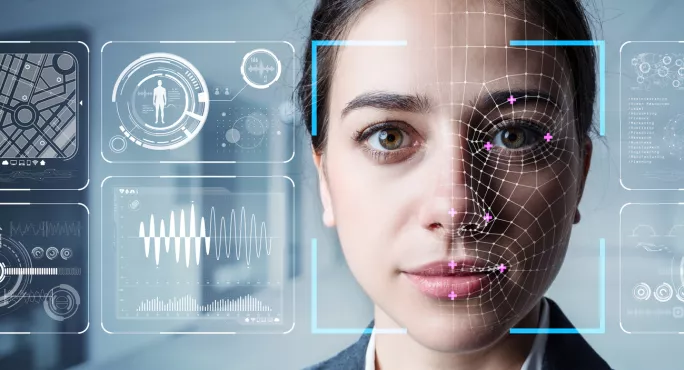Use of facial recognition in schools: what we know

On Monday, North Ayrshire Council began using facial recognition technology in its nine secondaries so that students could pay for their school dinners contact-free.
The council says it made the change to speed up service and to reduce the risk of spreading Covid-19 via pin pads or fingerprint recognition.
However, the authority has come under fire from privacy campaigners and now the Information Commissioner’s Office (ICO) has stepped in.
Tomorrow, the council and ICO will meet so it can scrutinise the system that has been put in place.
Here’s what we know so far:
Why did the council introduce the new system?
The council says its catering system contracts were coming to a natural end and it had the opportunity to install an IT infrastructure that would make the service “more efficient and enhance the pupil experience using innovative technology”.
The council says “given the ongoing risks associated with Covid-19” it was keen to have contactless identification “as this provides a safer environment for both pupils and staff”.
It adds: “Facial recognition has been assessed as the optimal solution that will meet all our requirements.”
North Ayrshire Council also says the new technology will speed up the time it takes to be served at the till points which was “a common complaint and potentially one of the reasons why pupils opt to go outwith school grounds for lunch”.
On Monday 18 October, we will introduce our new catering and school payment system - iPayimpact.
- North Ayrshire Council (@North_Ayrshire) October 14, 2021
The new pre order facility is for those with free school lunches and those who pay.
For more information on how it works and answers to FAQs visit: https://t.co/vVGUBiRMvt pic.twitter.com/wyLMHkq9qP
How does the system work?
The council says when a student looks at the camera, the software takes “faceprint templates”, which are measurements of key points on the face, and compares this against the database of registered users. When it finds a match, it automatically opens the cashless catering account, allowing the operator to complete the sale of the school meal.
The council says the “facial registrations” are encrypted and cannot be used by another agency, and when the student leaves school or opts out of the system, they will be deleted.
Will the data be shared and used for any other purposes?
The council says it won’t. It says “the data is only used to identify the pupil and ensure the correct account is debited” and that “the data-sharing agreement with the supplier prohibits any further sharing of the data”.
What has the reaction from parents been?
Parents have been quoted in the media questioning why a less invasive system was not put in place but the council says that although parents, carers and pupils could opt out and use a pin number instead of facial recognition, 97 per cent provided consent.
The council says: “In keeping with the ICO UK GDPR guidance, pupils in S4-S6 have been allowed to provide their own consent while pupils in S1-S3 require parental consent.”
Are there other concerns?
Silkie Carlo, the director of Big Brother Watch, has been quoted as saying no child should have to go through “border-style identity checks just to get a school meal”.
She told The Guardian newspaper: “We are supposed to live in a democracy, not a security state.
“This is highly sensitive, personal data that children should be taught to protect, not to give away on a whim. This biometrics company has refused to disclose who else children’s personal information could be shared with and there are some red flags here for us.”
Carole Ford, the Scottish Liberal Democrat spokesperson for schools and education, and a former secondary headteacher, said in a TV interview that delays in dinner halls were caused by the time it took to serve food, not by the time it took to pay.
She argued there was no need for “such a drastic solution” and that all the money and effort put into the new system would have been better invested in educating students about healthy eating.
.@CaroleFord1 has today warned about the dangers of using facial recognition technology in schools. What is your opinion on this type of technology being implemented in schools? pic.twitter.com/qL4fpVNGAo
- Scottish Lib Dems (@scotlibdems) October 20, 2021
Concerns have also been raised about facial recognition technology because it frequently misidentifies women and people of colour.
What has the Information Commissioner’s Office said so far?
An ICO spokesperson said organisations using facial recognition technology must comply with data protection law before, during and after its use, adding: “Data protection law provides additional protections for children, and organisations need to carefully consider the necessity and proportionality of collecting biometric data before they do so.
“Organisations should consider using a different approach if the same goal can be achieved in a less intrusive manner. We are aware of the introduction, and will be making inquiries with North Ayrshire council.”
The spokesperson also said: “Anyone who feels that their personal data has been processed in a manner that is unlawful can raise a complaint directly with the ICO.”
*Update: On Friday 22 October North Ayrshire Council announced that it had “temporarily paused” the contactless payment system which uses facial recognition in its secondaries. It said that while the technology was unavailable pupils would be using a pin number to pay for their meals to allow the council to “consider and respond” to the enquiries received from individuals and organisations, including ICO.
You need a Tes subscription to read this article
Subscribe now to read this article and get other subscriber-only content:
- Unlimited access to all Tes magazine content
- Exclusive subscriber-only stories
- Award-winning email newsletters
Already a subscriber? Log in
You need a subscription to read this article
Subscribe now to read this article and get other subscriber-only content, including:
- Unlimited access to all Tes magazine content
- Exclusive subscriber-only stories
- Award-winning email newsletters



